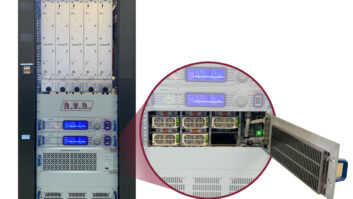
Fig. 1: Mouser carries a Kobiconn brand TRRS connector fit for the job. Kirk Chestnut works at the Entercom cluster in Kansas City. He responded to the June 3 Workbenchcolumn in which Michael Heim could not find a source for 1/8-inch (3.5 mm) TRRS (tip-ring-ring-sleeve) connectors used for adapting an external mic for use with an iPad or iPhone.
Kirk informs us that Mouser Electronics sells a Kobiconn brand TRRS connector. Head to mouser.com and search for171-7435-EX.
He has found that the impedance at which many cell phones switch from “headphone” mode to “headset” mode (to include a microphone) is a bit higher. Therefore, he and his team have resorted to adding a 2.2k ohm resistor in series, as well as a 3.3 microfarad blocking cap for safety. Kirk adds that the 3.3-microfarad blocking cap is Mouser part number 647-UMW1V3R3MDD; it fits nicely in between the solder cups of the XLR connector.
A schematic of the adaptor cable is shown in Fig. 2. Thanks, Kirk, for a great solution, as more and more engineers press iPads and iPhones into remote service.
* * *
David Sproul, chief engineer of WMAL(AM)/WRQX(FM) in Washington, said he has enjoyed the Workbench discussions related to creating fun graphics for engineering projects.
Dave reports that the ChartPak film we mentioned was temporarily out of stock when he called, but he’s happy to wait. As for the metallic film we discussed in March, there’s a dizzying selection online. Be patient; I’ll get some specific URLs from Frank Hertel for a future column.
I received a number of comments about using labeling films. Engineers still find time to home-brew circuits, and they take pride in labeling these projects professionally.
By the way, Dave Sproul passed a milestone in early June: He celebrated his 40th anniversary with the stations. Congratulations, Dave, and keep up the good work.
* * *
There must be something about 40th anniversaries.
Click here to download the PDFFig. 2: Use this circuit for adapting an external microphone to an iPad or iPhone.
For 40 years, Robert Gonsett, W6VR, has edited and published the CGC Communicator. He recently announced it’s time for a sabbatical. Engineers all over the United States have subscribed to this free e-newsletter, but especially folks on the West Coast, where Bob is headquartered.
The newsletter provided timely FCC news, inspection results and useful engineering information to West Coast broadcasters. Readers may remember seeing the CGC Communicator credited for a number of Workbench tips over the years. For that information, we thank you, Bob.
It turns out the circuits used to upload the newsletter are being dismantled by CGC’s Internet service provider “Connectnet.” So until other arrangements can be made, the Communicator will take a breather.
* * *
Paul Sagi, an engineer in Kuala Lumpur and a frequent Workbench contributor, sends a link that may be ideal for small-station management or even contract engineering firms.
WinWeb Online Office Suite is a cloud-based collection of business apps. Included are accounting software, CRM, HelpDesk and business planning tools. It’s ideal for start-ups or established businesses. Google WinWeb Online Office.
* * *
Recently I ran into an engineer who was trying to feed cabling through conduit and found it challenging. The same is true when feeding cables through the coiled Nycoil sheathing used on a remote truck’s mast.
Of course the easiest solution is to have the factory do it. But if you’re replacing existing cable, here’s a solution.
Stretch the Nycoil sheathing out along a chain link fence, securing the sheathing with wire ties to hold it straight. The next step is to visit an electric supply house and purchase those little foam plugs that have a string attached. A shop vac will suck the foam plug through the sheath, when fitted with a reducer. A cardboard funnel secured with duct tape makes a nice reducer. Next, tie your fish tape onto the end of the string and pull the fish tape through. Tape your coax and wires into a tight bundle, secured to the end of the fish tape. Generously apply a gel wire lubricant, and pull.
The job is a little difficult getting started, but once it gets going, you’ll be fine. Whether it’s the Nycoil or conduit, remember to add a couple extra wires. There’s no way you’ll add wires later!
Contribute to Workbench. You’ll help your fellow engineers and qualify for SBE recertification credit. Send Workbench tips to [email protected]. Fax to (603) 472-4944.
Author John Bisset has spent 44 years in the broadcasting industry and is still learning. He handles West Coast sales for the Telos Alliance. He is SBE Certified and is a past recipient of the SBE’s Educator of the Year Award.












